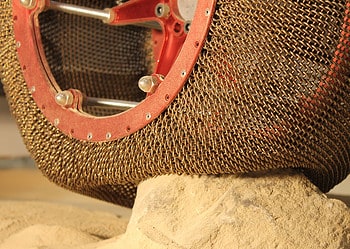Scientists have devised a low-power battery made from paper coated with graphite and zinc. Like a cooking recipe, the paper battery stays dormant until you add water. The ultra-thin device could power tiny yet useful electronics, such as real-time parcel trackers, environmental monitors, and medical sensors.

“With rising awareness of the e-waste problem and the emergence of single-use electronics for applications like environmental sensing and food monitoring, there is a growing need for low environmental impact batteries. This shift from the traditional performance-oriented figure of merits creates new opportunities for unconventional materials and designs that can provide a balance between performance and environmental impact,” wrote the authors of the new study.
Researchers at Swiss Federal Laboratories for Materials Science and Technology (EMPA) led by Gustav Nyström started off with literally a piece of paper. On one side, they printed a circuit using graphite ink, acting as a cathode. The other side was printed using zinc powder ink to make the anode side.
The final piece of a battery is the electrolyte. In this case, the small rectangular sheet of paper was soaked with a salt. But the circuit doesn’t open until you add a drop of water, which sets off a chemical reaction that allows electrons to flow through the battery.
However, don’t imagine you can power your phone or anything fancy like that. During one experiment, a battery made from two paper cells powered an LCD display that worked as an alarm clock. The battery turned on just 20 seconds after two drops of water were added. The display showed the time for about an hour until the paper dried off and the current was switched off. After another two drops of water were added, the device ran for another hour. Adding more zinc to the paper will increase battery life, but this is the type of battery life we’re talking about with this technology.
“To facilitate additive manufacturing, we developed electrodes and current collector inks that can be stencil printed on paper to create water-activated batteries of arbitrary shape and size,” the researchers wrote in their study.
“Once activated, a single cell provides an open circuit potential of 1.2 V and a peak power density of 150 µW/cm2 at 0.5 mA.”
Both paper and zinc are biodegradable and could be recycled in the right conditions. This makes this low-power battery quite useful for real-time tracking of packages. After a parcel is delivered, the packaging can be safely discarded.
Previously, researchers elsewhere made aqueous batteries based on inorganic materials like magnesium, iron, tungsten, and molybdenum, but to our knowledge, this paper battery is the first water-activated device that is biodegradable and non-toxic.
The findings appeared in the journal Scientific Reports.






